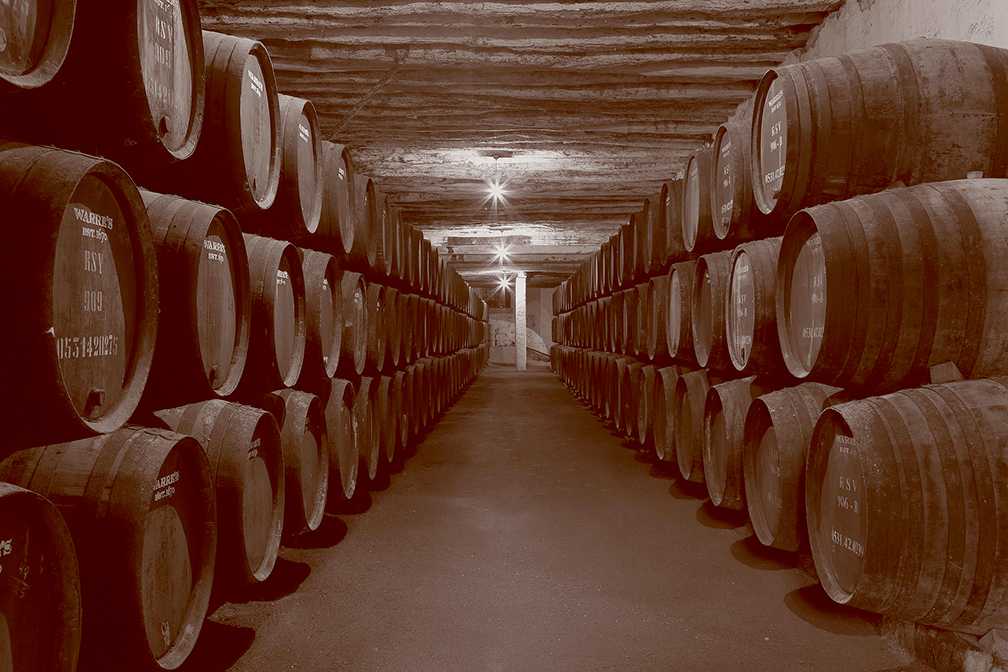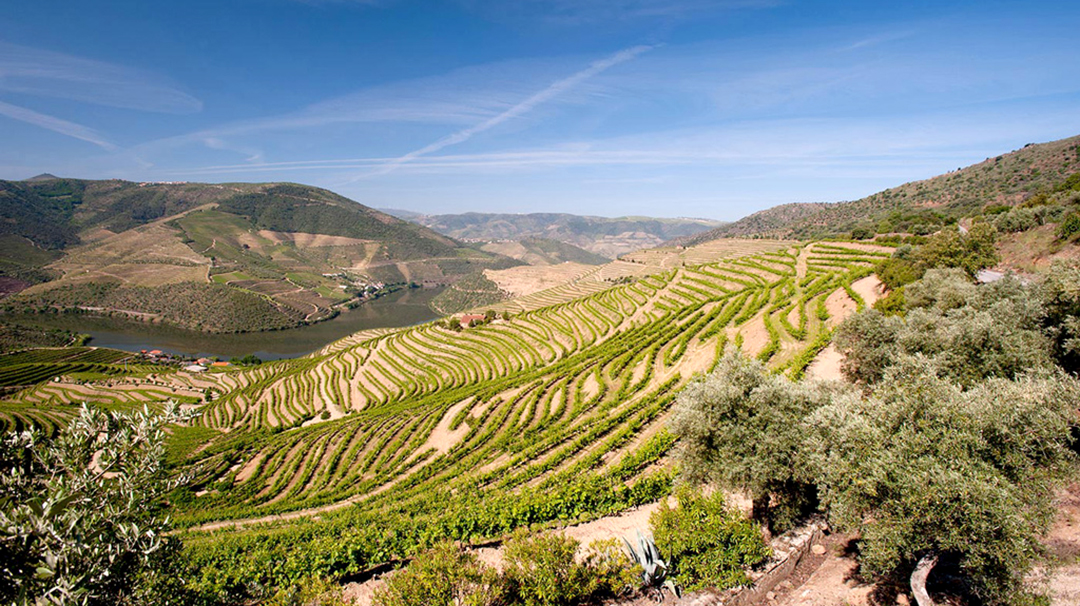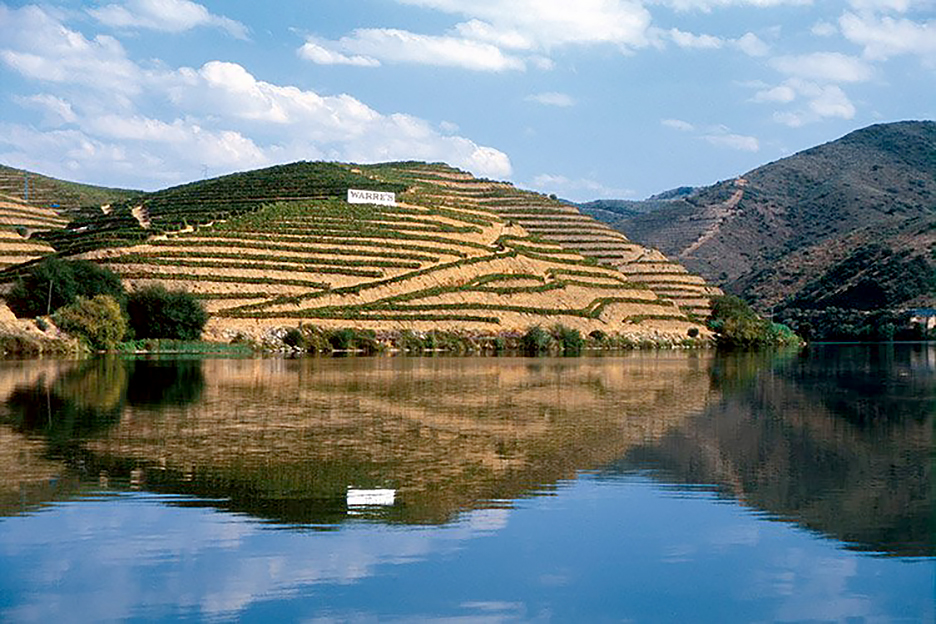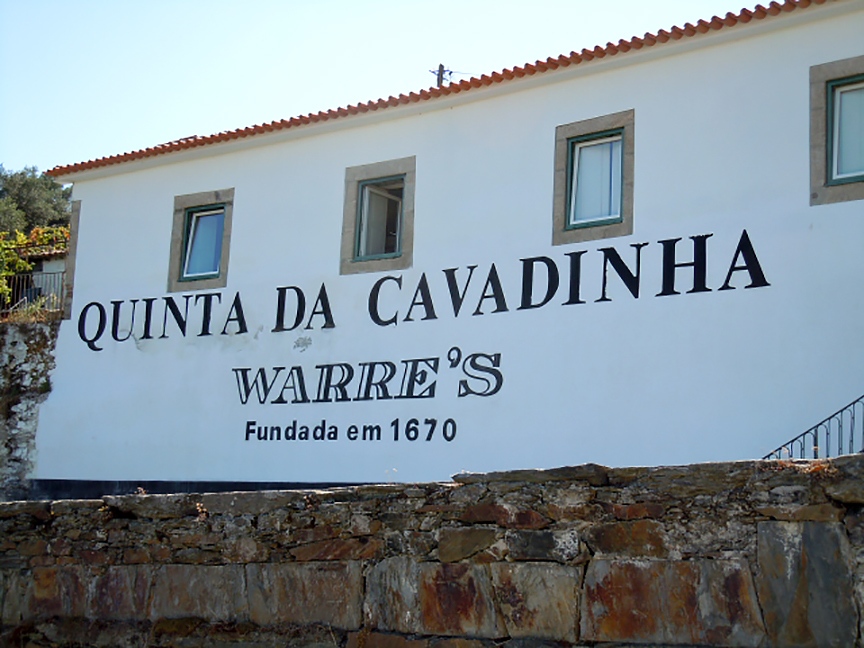Deep gold color; baked apple, poached pear, honeydew melon, vanilla, almond, honey, crème brûlée, white flowers on the nose and palate.
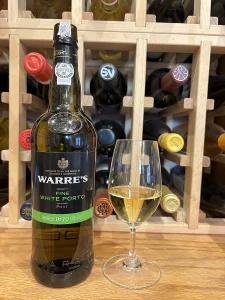
Sweet; minimal tannins, as expected with white porto. Moderate, relatively low acidity (3.7 g/L TA—generally consistent with white porto), but juxtaposed to the sweetness its perceived tartness balances the residual sugar. Made with arinto, códega do larinho, malvasia fina, rabigato, viosinho. The rabigato in particular brings acidity, but all the grapes are notable for some acidity and smooth mouthfeel. Aged briefly in both wood and stainless steel to minimize tannins. Moderate acidity and minimal tannins are hallmarks of quality wine white porto, of which this clearly is an example. 19% ABV
Warre’s Fine White Port is exceptionally suited for making cocktails and is highly regarded by bartenders. White porto and tonic is a classic Portuguese aperitif—three ounces of porto and three ounces of tonic water served over ice with an orange slice and a sprig of mint. It can add complexity and sweetness to gin or vodka-base drinks. It often is used as a substitute for vermouth, in white negroni, for instance. It can be mixed with orange-based liqueurs like Cointreau. It consistently delivers depth and sophistication and a slight, sweeter twist on various cocktails.
Warre’s is one of Portugal’s most famous port houses. They make a range of ports, from vintage porto, to reserve, to tawny, ruby, and white ports. The house’s origins began in 1670 when two Englishmen, Burgoyne and Jackson, established a company trading in wine, oil, fruit, fresh produce, and wool. William Warre arrived in 1729 and became a partner in the business, which by that time was named Clark, Thorton and Warre.

According to the Warre website: “Commissioned as an officer in the British Army, the young Porto-born Captain Warre [grandson of the original William Ware] played a central and decisive role at virtually all of the key battles throughout the Peninsular War (1808 – 1812), during which joint British and Portuguese forces fought Napoleon Bonaparte’s successive invading armies.” He eventually attained the rank of Lieutenant–General.
The house stayed in the Warre family until 1905 when Andrew James Symington became a partner. Today, Warre is run by the 13th generation of the Symington family. The Symingtons also own the Dow’s and Graham’s port houses, easily making them the world’s dominant maker and exporter of porto.
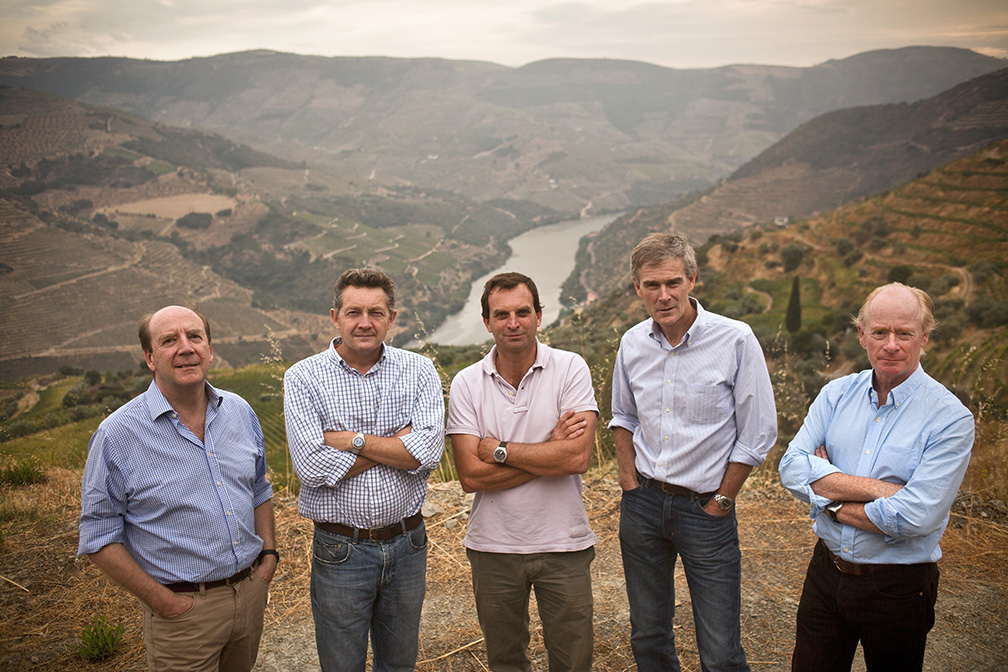
According to the Warre website: “Warre’s has vineyards throughout the Douro, the most famous of which are the Quinta da Cavadinha, Quinta do Retiro Antigo and the recently acquired Quinta de Telhada. These three vineyards are used to make various ports throughout the portfolio, each contributing different characteristics – Cavadinha gives fresh aromatics and acidity, whereas Retiro Antigo produces wines with higher concentration. The estate’s Vintage Port tends to be blended from these two vineyards, although fruit from Telhada will soon be included in the blend as well. In years where a vintage is not declared, a single vineyard vintage port is made from the Cavadinha vineyard.”
Warre’s Fine White Porto is sweetly delicious with acidic backbone to deliver balance. Very drinkable as it is, extremely versatile as a mixer in cocktails. Can be well chilled and mixed 50-50 with tonic water for refreshing summer sipper.
